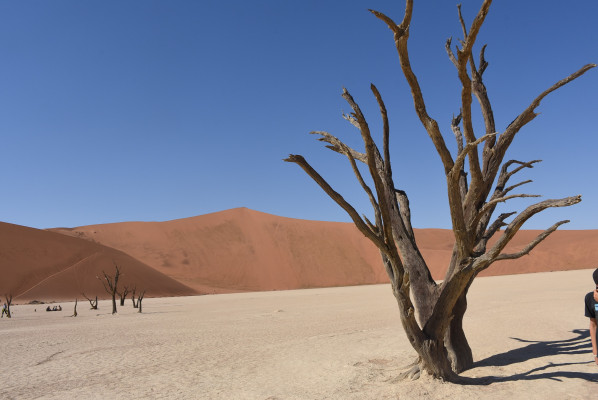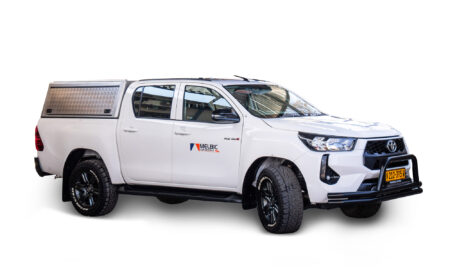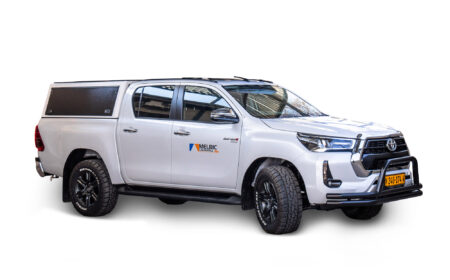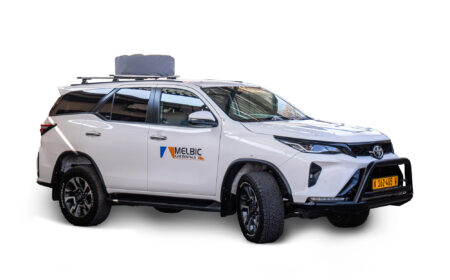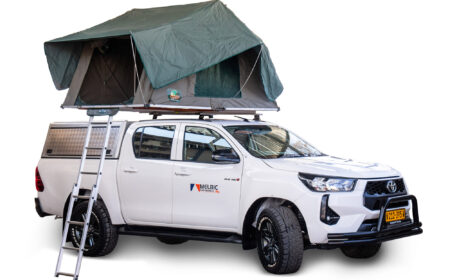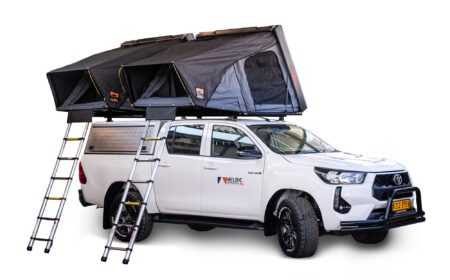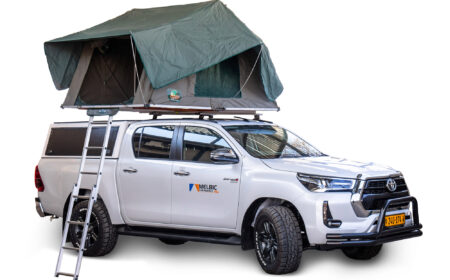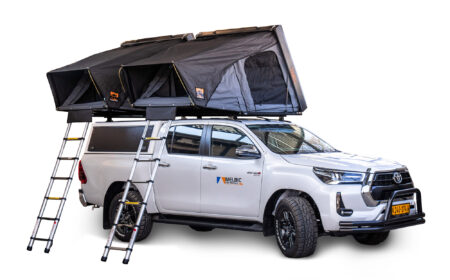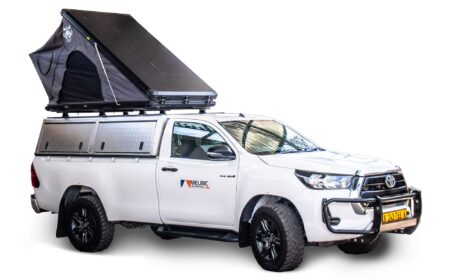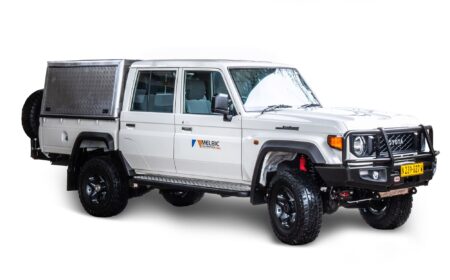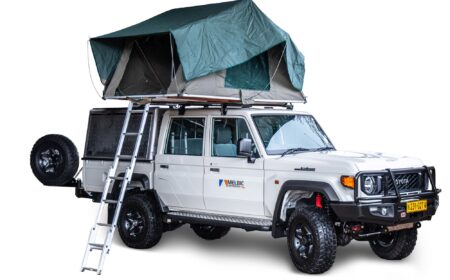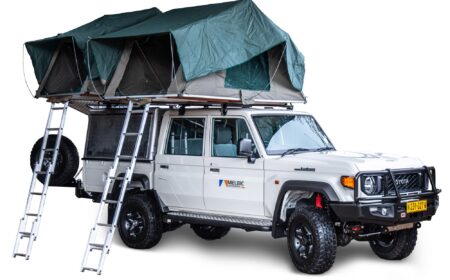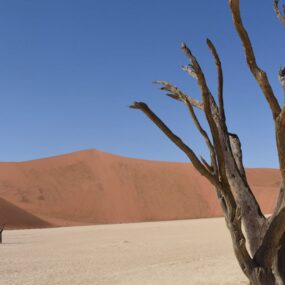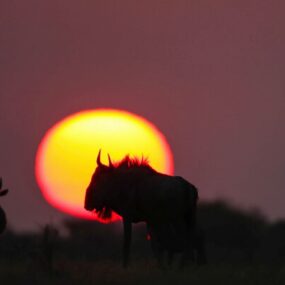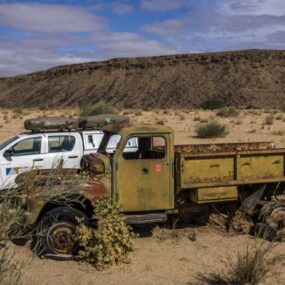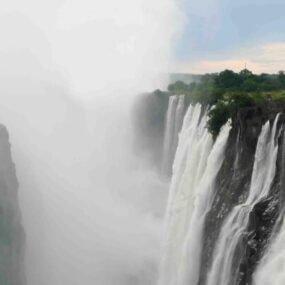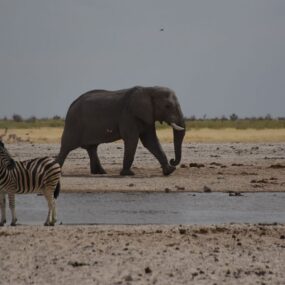Practical tips on 4×4 Self-driving in Namibia
You’ve secured your vehicle, planned your route and packed your bags for that epic self-drive trip across Namibia. Now that you are ready to hit the road, there are a few things you should remember that will guarantee a great trip. Enjoying a self-drive safari or holiday adventure only comes when you understand how to operate your vehicle in different environments. Because Namibia’s landscape is so diverse and dramatically contrasting in most parts, it is essential that you are aware of how to operate your vehicle in these different conditions. Apart from the terrain alone, the weather also has contributing factors to how your vehicle operates.
Most vehicles provided for self-drive safaris in Namibia need little fuss with regards to getting from one point to another as they are easily adaptable and can therefore be used by even a novice 4×4 driver. With an option between automatic or manual transmission, 4×4 driver skill or prior experience is not necessarily a must. The aim to provide vehicles that allow everyone to have the opportunity to take on a self-drive challenge head on. However, there are a few practical guides that would help your driving experience better. This list is not exhaustive and is not the absolute 4×4 manual, but rather a collection of tips that would assist you on your journey drawn from past experiences.
Be technically prepared
After ensuring you have everything you need, always ensure that your vehicle has all the add-ons that you may need if you are travelling into 4×4 territory. 4×4 territory is terrain that does not resemble ordinary driving conditions, that is, non-tarred roads or surfaces. As a self-drive tour operator and vehicle hiring company, Melbic Car Rentals Tours and Transfers for instance always ensure that they provide you with the best vehicle for your trip that compliments your itinerary.
Firstly, understand how the vehicle operates. Knowing the ins and outs of the vehicle’s basic operation under different conditions may be the difference between a smooth and bumpy ride. Our staff are on hand to offer assistance and answer any queries before you set off. If any issues arise with the vehicle, feel free to contact us on the numbers provided.
Double check if your vehicle is equipped with a spare tyre, or two.
Two spare tyres are useful when embarking on an extensive self-drive on rough roads that put a high demand on tyres, or for more isolated areas, far from any mechanic or tyre fix and replacement stores. The spare tyre, along with the other tyres on the vehicle, should be inflated to the correct pressure. It is also important to check tyre pressure when you can before setting off on your day’s journey.
Ensure that all your tyre changing tools are available and know where they are stored and how they operate. Always familiarise yourself with said equipment as it may differ from vehicle to vehicle. We are more than glad to show you how the jack operates and where to place it on the vehicle to get proper lift when changing a tyre. Make sure you have
A jack
A reflective triangle
A wheel spanner
A lock nut key, if lock nuts are used on the rims.
Tyre pressure is vital when it comes to self-drive tours on Namibian roads. Because Namibia is an unforgiving country, roads can be daunting, but when done right can be a joy to drive on. To drive on such surfaces, tyres are usually left a little on the soft side as it helps with traction on lose gravelly surfaces – and softer tyres dampen the ride. Follow the instructions given with your vehicle for peace of mind.
Our vehicles come equipped with a shovel to allow you to dig yourself out of sticky situations if they do occur. Always make sure it is stored in its place and you know where this is, for when you need it.
A tow-rope is always an essential tool to have when doing self-driving in 4×4 country. You might have the opportunity to help a fellow traveler.
Get a local SIM card for your mobile phone, unless a phone and SIM card is provided standard such as with Melbic. Most parts of Namibia have cellphone network coverage, save some more deserted areas. Keep it charged to allow you to communicate if the need arises in an emergency.
Vehicles have a basic first aid kit in the vehicle to allow for primary care. Take note of what is inside, and if needed, supplement, according to your requirements.
Be mentally prepared
Although this seems a bit of an oxymoron for someone on a holiday, the demands of a 4×4 self-drive can be mentally taxing. It is always wise to truly understand the nature of the challenge ahead and to properly prepare for it mentally and physically.
Get enough rest between drives. Driving long stretches can be exhausting, especially when going at it alone. Adequate rest allows your body to recover both mentally and physically, and helps you get the best out of your trip. Ensure your trip is scheduled in a way that allows for adequate rests between drives. At most, target 400km every 24 hours.
If you have an assistant driver, swap ever so often to reduce the burden on one driver during your trip. A drive around Namibia is more enjoyable if you have someone to share it with.
Drink lots of water. Namibia is a hot country, with average temperatures of 35°C in summer, in some parts, that average is as high as 41°C. Staying hydrated means you retain a lot of energy which is otherwise lost through fatigue.
Eat well and heartily. Energy is essential to tackle some of the dunes, rivers and rocky outcrops you will be driving in. Take a few munchables with you, you never know how long you will be on the road. Sometimes, when in a bind, help might come after a few hours, as most of the adventurous 4×4 roads are off the beaten track, with vehicles coming by only so often.
Know your route and road surfaces
Gather as much knowledge on your scheduled route before setting off, so as to anticipate any challenges on the road and better prepare for your 4×4 driving experience. Know where there are sandy patches, potential river crossings in the rainy season, or bad corrugation, so as to allow you to adjust your drive accordingly. The majority of Namibia’s roads are 1st grade gravel roads with main tarred roads linking major towns and settlements, making your driving experience easier and more pleasurable. Namibia’s roads were ranked as amongst the best in the world, certainly leading the pack on the continent.
A little more information to keep your wheels rolling.
Driving on tarmac requires you to inflate the vehicle’s tyre pressure to the stipulated level. Do not overinflate.
Driving on gravel roads can be undertaken with vehicle’s stipulated tyre pressure. Slower speeds however are advised and due care to be exercised to allow for the spotting of potential hazards on time.
If encountering very sandy surfaces a very low tyre pressure and slower consistent speeds allow for the maintenance of vehicle momentum.
Every self-drive adventure is one to write home about. Great stories and amazing memories are made on the road and such adventures will always leave you with something to talk about at the dinner table with friends. So take the challenge head on, hop into your car and enjoy every kilometre, with all that it brings.
Happy driving!


